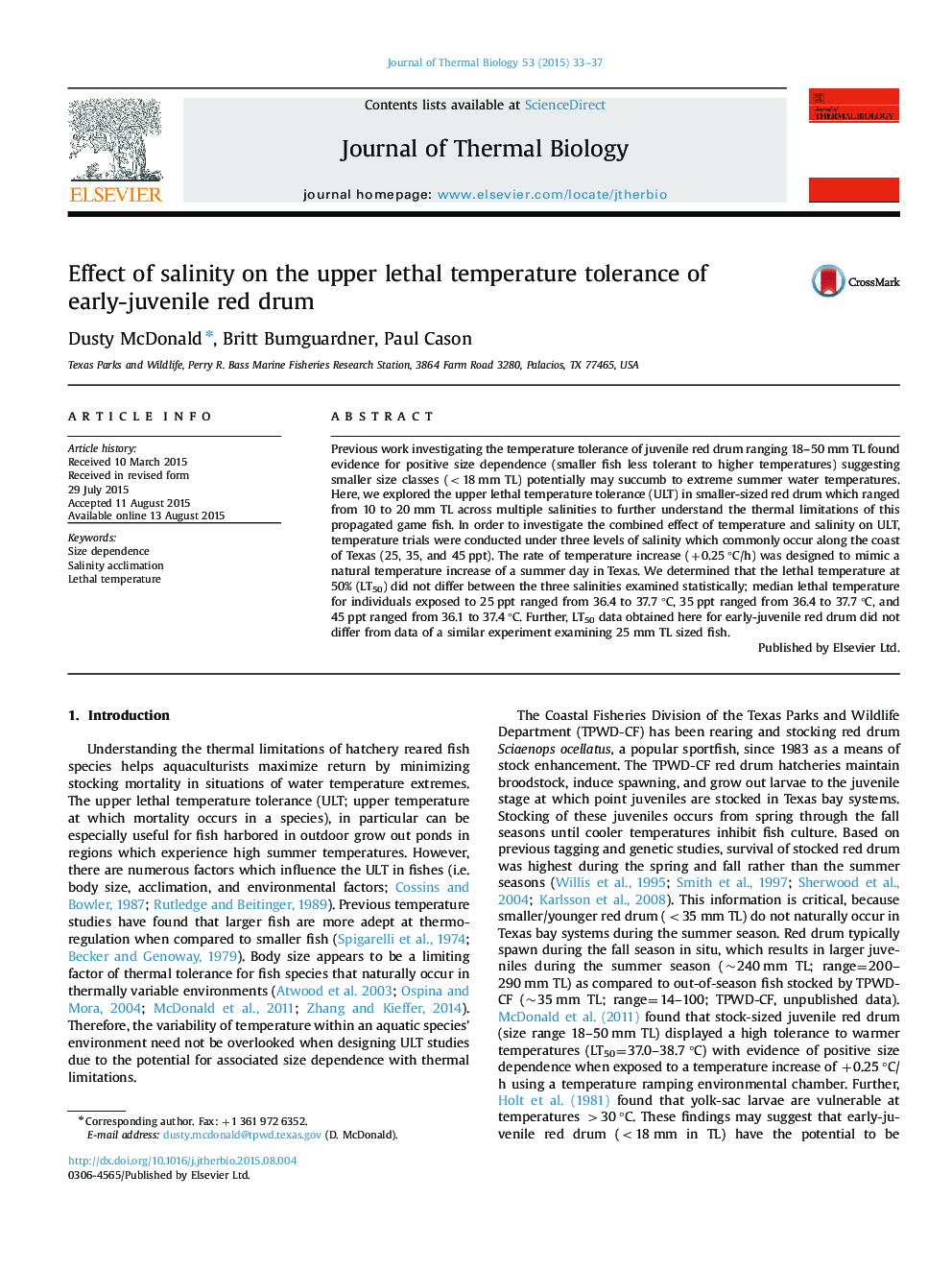| Article ID | Journal | Published Year | Pages | File Type |
|---|---|---|---|---|
| 2842793 | Journal of Thermal Biology | 2015 | 5 Pages |
Abstract
Previous work investigating the temperature tolerance of juvenile red drum ranging 18-50 mm TL found evidence for positive size dependence (smaller fish less tolerant to higher temperatures) suggesting smaller size classes (<18 mm TL) potentially may succumb to extreme summer water temperatures. Here, we explored the upper lethal temperature tolerance (ULT) in smaller-sized red drum which ranged from 10 to 20 mm TL across multiple salinities to further understand the thermal limitations of this propagated game fish. In order to investigate the combined effect of temperature and salinity on ULT, temperature trials were conducted under three levels of salinity which commonly occur along the coast of Texas (25, 35, and 45 ppt). The rate of temperature increase (+0.25 °C/h) was designed to mimic a natural temperature increase of a summer day in Texas. We determined that the lethal temperature at 50% (LT50) did not differ between the three salinities examined statistically; median lethal temperature for individuals exposed to 25 ppt ranged from 36.4 to 37.7 °C, 35 ppt ranged from 36.4 to 37.7 °C, and 45 ppt ranged from 36.1 to 37.4 °C. Further, LT50 data obtained here for early-juvenile red drum did not differ from data of a similar experiment examining 25 mm TL sized fish.
Related Topics
Life Sciences
Agricultural and Biological Sciences
Agricultural and Biological Sciences (General)
Authors
Dusty McDonald, Britt Bumguardner, Paul Cason,
